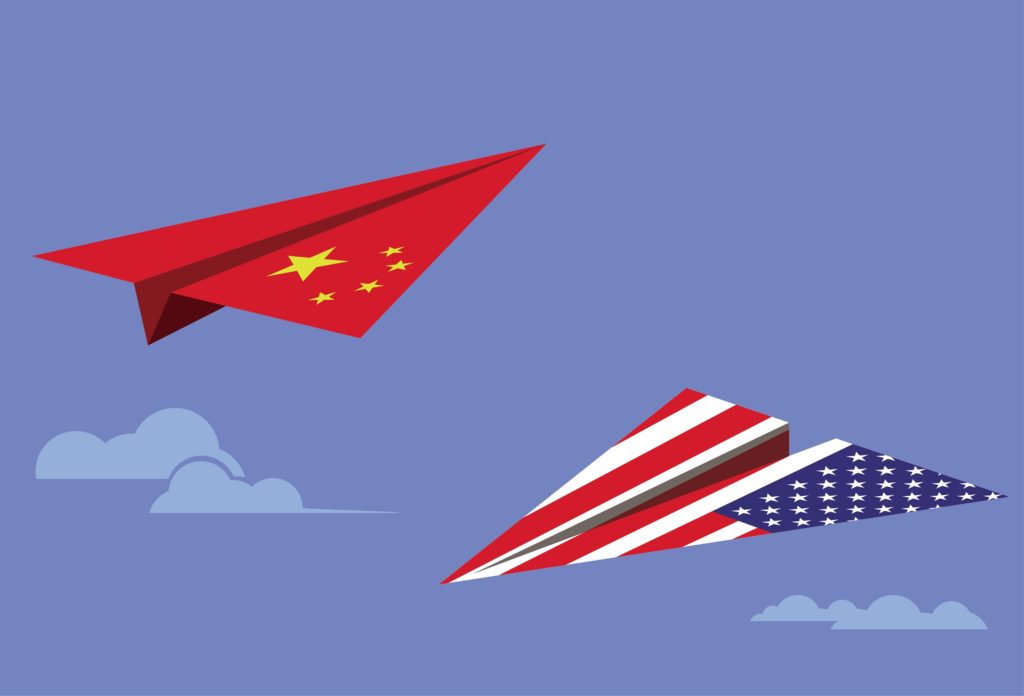On December 28, 2022, responding to the US Indo-Pacific Strategy, the Republic of Korea (ROK) published its “Strategy for a Free, Peaceful, and Prosperous Indo-Pacific Region” which is effectively the foreign policy doctrine of ROK President Yoon Suk-yeol.
This document articulates three visions, three cooperative principles, and nine core tasks through which the ROK will implement a comprehensive regional strategy. It encapsulates the ROK’s commitment to broadening its diplomatic influence into a “Global Pivotal Role,” and explains how the ROK will contribute toward the US Indo-Pacific Strategy announced February 11, 2022. In the context of intensifying US-China strategic competition, this is also the first clear presentation of the Yoon administration’s diplomatic stance on China.
The document outlines a regional strategy which expands beyond the Korean Peninsula, and calls for a balanced foreign policy between the ROK’s biggest trade partner, China, and its main military ally, the US. But it hardly mentions North Korea’s continuing nuclear and missile programs, and it leaves the ROK’s military strategy unclear: will there be a defensive or offensive approach to dealing with military tensions between the two Koreas? The Yoon administration describes it as the ROK’s first comprehensive regional foreign policy, but much remains to be clarified, so what are the most significant takeaways?
First, this is the ROK’s formal response to the US Indo-Pacific Strategy revealed last February, and with it, President Yoon declares his intention to build a “Global Pivotal Role” for the ROK in the Indo-Pacific.
Second, ROK policy is still constrained by the turbulent currents of the US-China relationship, and as President Yoon made clear in his address to the Korea-ASEAN Summit in Cambodia on November 11, 2022, he is tilting sharply towards the US, and risking putting all his eggs in the same basket.
Third, for a supposedly balanced strategy, it is remarkable that this report contains just a single paragraph about the ROK’s relationship with China. Beijing is called a “key partner” with which Seoul will pursue shared interests based on mutual respect and reciprocity, guided by international norms and rules. In contrast, much more is said about the ROK’s long-standing and vital military alliance with the US, which is to be strengthened geographically, with enhanced cooperation on issues of nuclear non-proliferation and counter-terrorism.
Fourth, the threat from North Korean nuclear and missile development is given a surprisingly low priority, and likewise the importance of North Korea adhering to UN Security Council resolutions is downplayed. In the context of international attempts to limit nuclear proliferation North Korean denuclearization is essential, especially given the accelerating pace of their WMD development in recent years, but the ROK’s Indo-Pacific Strategy makes little reference to denuclearization, and then in an ambiguous way.
Fifth, this report does not refer to the US-UK-Australia security cooperation known as AUKUS, but emphasizes the Quadrilateral Security Dialogue (QUAD, involves Australia, India, Japan and the US), Partners in the Blue Pacific (the US, Japan, Australia, New Zealand, and the UK), ROK-US-Australia cooperation, and other multilateral cooperation arrangements. China has taken strong exception to AUKUS providing nuclear-powered submarines for the Royal Australian Navy, seeing it as part of the US strategy to contain China, and the ROK has kept its distance from AUKUS. The ROK does, however, plan to join the QUAD’s Maritime Domain Awareness subcommittee.
Sixth, the ROK’s regional policy approach is shifting from dealing with imminent and deadly serious military threats to seeking diplomatic solutions. For example, the member nations of ASEAN are facing serious pressures—economic, military and diplomatic—from China, in response to which they are pursuing weak but long-term diplomatic ties with third parties, including the US, the EU, and NATO. In fact, the new ROK strategy is very similar to that published by ASEAN in its “ASEAN Outlook on the Indo-Pacific.”
Seventh, the ROK has taken its time in elaborating its own Indo-Pacific Strategy, since the corresponding US policy was announced last February. It was prudent to wait until Chinese President Xi Jinping was granted his third term of office by the 20th Chinese Communist Party Congress on October 16-21, 2022, following which there were a few gestures of de-escalation in US-China rivalry. Hopefully this will enable the ROK to continue to maintain a balance between the US Indo-Pacific Strategy and China’s “New Era” strategic approach.
Standing back to take a broader perspective on the how the ROK’s Indo-Pacific Strategy will impact regional security, there are several further observations to be made.
First, China has reason to be pleased by the ROK’s bold language in describing China as a key partner in building a stronger and more mature multifactorial relationship between the ROK and China. Conspicuously, US National Security Advisor Jake Sullivan merely commented that the US welcomes the ROK’s adoption of its new Indo-Pacific Strategy as a reflection of the ROK-US shared commitment to the region’s security and growing prosperity.
Second, the ROK has taken into account the impact of this strategy on North Korea’s nuclear and missile programs: the text mentions that North Korean WMD threaten regional and global stability and peace, and refers to the ROK-US alliance and to ROK-Japan-US security cooperation as mechanisms to resolve this issue. It does not, however, propose a whole-of-region Indo-Pacific approach to the North Korean problem.
Third, in this document the ROK has skillfully incorporated essential aspects of the US Indo-Pacific Strategy, emphasizing freedom and prosperity and the maintenance of international good order through international norms and laws. At the same time however, the ROK has plausibly included China as a key partner, and has avoided the kind of bellicose language frequently employed by US commentators when talking about China as posing a military threat. The ROK has successfully positioned itself as a “Global Pivotal Nation.”
In conclusion, this strategic report has effectively coupled the ROK more closely to its military ally, the US, without gratuitously upsetting its primary economic partner, China. The ROK needs China for strategic support in its efforts to de-escalate tensions with North Korea, and also wants China to accept the ROK taking a wider role in maintaining the security of Northeast Asia beyond the Korean peninsula.




